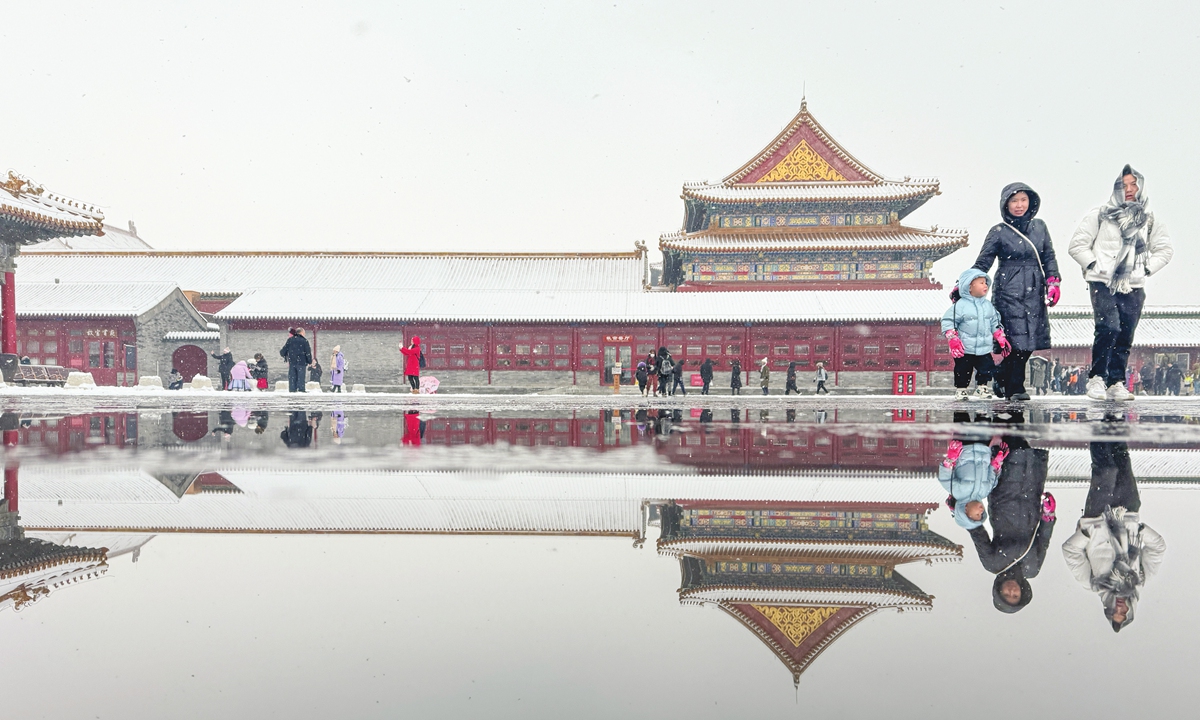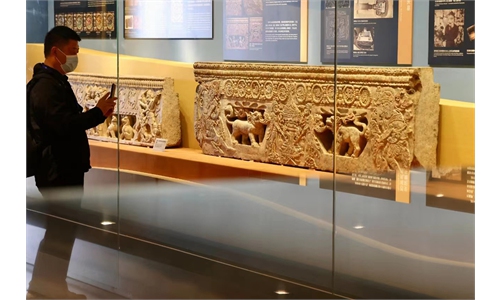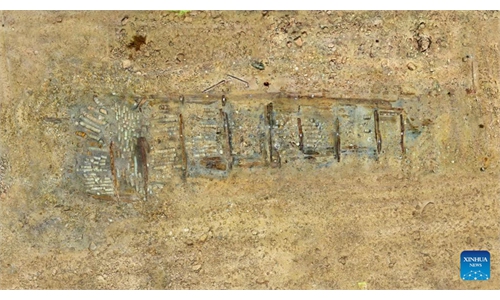ARTS / CULTURE & LEISURE
Several ‘first-ever’ archaeological achievements in Beijing reveal city’s cultural origins

The Palace Museum in Beijing has a breathtaking view in the snow on December 13, 2023. Photo: IC
Including a publication that reveals the latest conservation plans for the Great Wall of China, several archaeological achievements in Beijing over the past few years have recently been introduced to the public.Major discoveries in several of the city's notable archaeological spots such as the Xingong site of the Xia (c.2070BC-c.1600BC) and Shang (c.1600BC-1046BC) dynasties and the Liulihe site known for its related DNA research were all included in the announcements.
The Xingong site is located in Beijing's Fengtai district. Prior to its discovery, there was no physical embodiment revealing what that part of Beijing looked like back during the Xia and Shang periods. Prolific artifacts including gold, jade and pottery wares were unearthed.
Ancient tombs discovered at the site were identified to have been created in multiple dynasties like the Xia, Shang as well the Qin (221BC-206BC) and Han (206BC-AD220).
"Even relics from the Qing Dynasty were also found. The Xingong site proves the city's history developed continually, this is also a characteristic of China's historical civilization," archaeologist Lu Zhaojun told the Global Times.
With the support of high-tech DNA research, experts identified the occurrence of "intermarriage" after investigating nine human skeletons unearthed from the Liulihe site in Beijing's Fangshan district.
Ning Chao, the lead archaeologist of the project, said the discovery sheds light on the "burial patterns and potential social organization structure of the ancient Yan people." The Kingdom of Yan was a vassal state in what is today Beijing during the Zhou Dynasty (1046BC- 256BC) more than 3,000 years ago.
"The Liulihe site reveals the 'origin' of Beijing," Ning noted.
The Jinzhongdu site is another blockbuster. It was the most important capital site of the Jin Dynasty and has witnessed how Beijing became a capital with different yet unified ethnic cultures.
The "horse face" Mamian ruin at the Jinzhongdu site is one of the latest discoveries. Archaeologist Qu Fulin explained to the Global Times that it was a "defensive structure" that contributed to the Jinzhongdu site's "overall military system," a most needed function of an ancient capital.
Also hidden in the Jinzhongdu site was the earliest central axis of Beijing. It divided the northern and southern parts of the ruin with buildings symmetrically distributed along a central axis. Qu emphasized that such a configuration sheds light on the research of the construction of an ancient Chinese capital.
To further enhance the site's importance, an archaeological report titled Jinzhongdu (2019-2020): Archaeological excavation report of city wall ruins was published in 2023. It was the first publication in China to focus on the Jinzhongdu site.
Along with the report, a book called The Great Wall Archaeology of Beijing was also revealed.
It collects the major archaeological achievements of the Beijing sections of China's Great Wall between 2018 to 2022. Through the analysis of Great Wall remains in Beijing's six districts, like Pinggu and Mentougou, the book offers new suggestions for the future conservation of the Great Wall. "Identifying potential damage" has been seen as a priority.
In October, a total of 29 tombs were discovered to belong to the Lei family during the Qing Dynasty (1644-1911). The Lei family was known for designing Qing imperial architecture including the prestigious the Summer Palace. The architectural aesthetics created by the Lei family is described as "Yangshi."
Inside of Beijing's cultural landmark the Palace Museum, its zaobanchu, a special agency manufacturing royal supplies, was found alongside a prolific amount of relics. Those relics include ceramics, glass and jade wares. Another discovery at the zaobanchu was that it dated back to the the Yuan (1279-1368) and Ming (1368-1644) dynasties.
All these spots were investigated under the city's cultural developmental strategy that is called "one axis, one city, two parks, three belts, one district, one center."
Cultural policy researcher Song Weiping told the Global Times that the one axis refers to the Central Axis of Beijing and the "city" refers to Beijing as a city of museums. Those "parks" and "belts" refer to sites like the Grand Canal National Cultural Park and the cultural belt of the Great Wall.
The "district" refers to Beijing's pilot district for conservation of relics. The "center" refers to the city's trade center of the international relics and arts.
Song told the Global Times that such guidance can better "interpret Beijing's historical and cultural origins."
The event for sharing these archaeological achievements was hosted by organizations such as the Beijing Municipal Cultural Heritage Bureau.



